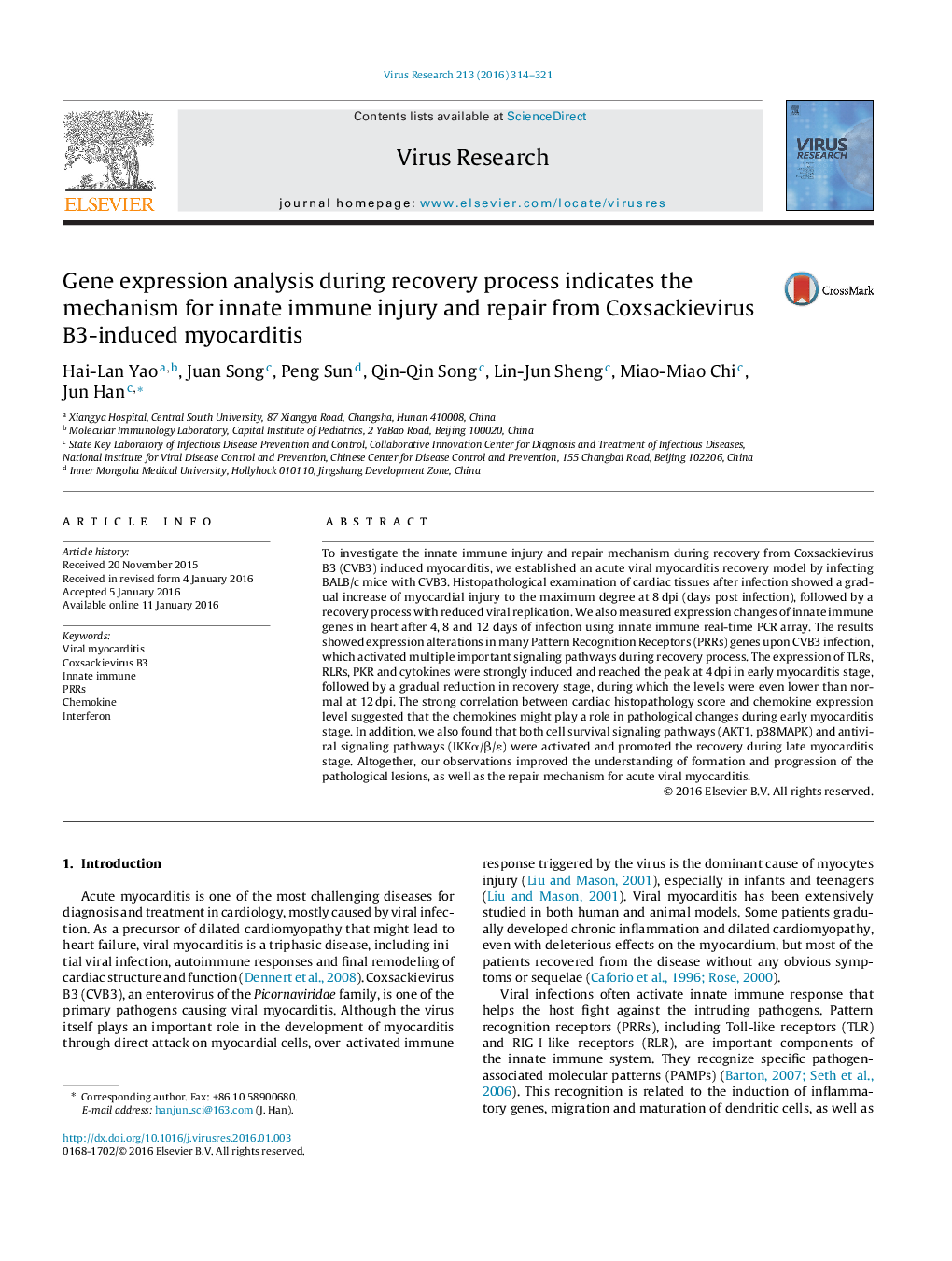| Article ID | Journal | Published Year | Pages | File Type |
|---|---|---|---|---|
| 3427925 | Virus Research | 2016 | 8 Pages |
•Viral RNA copy number in heart tissue reached to 106, 105, and 102.6 copies at 4 dpi, 8 dpi, and 12 dpi, respectively.•Cardiacchemokines contributed to CVB3-induced myocarditis.•Various PRRs were involved in occurrence and recovery of CVB3-induced myocarditis.•TBK1-IKKε-IRF5/7-IFN-β signaling pathways participated in antiviral process in CVB3-induced myocarditis.•Both cell survival signaling pathways (AKT1, p38MAPK) and antiviral signaling pathways (IKKα/β/ε) were activated and promoted the recovery during late myocarditis stage.
To investigate the innate immune injury and repair mechanism during recovery from Coxsackievirus B3 (CVB3) induced myocarditis, we established an acute viral myocarditis recovery model by infecting BALB/c mice with CVB3. Histopathological examination of cardiac tissues after infection showed a gradual increase of myocardial injury to the maximum degree at 8 dpi (days post infection), followed by a recovery process with reduced viral replication. We also measured expression changes of innate immune genes in heart after 4, 8 and 12 days of infection using innate immune real-time PCR array. The results showed expression alterations in many Pattern Recognition Receptors (PRRs) genes upon CVB3 infection, which activated multiple important signaling pathways during recovery process. The expression of TLRs, RLRs, PKR and cytokines were strongly induced and reached the peak at 4 dpi in early myocarditis stage, followed by a gradual reduction in recovery stage, during which the levels were even lower than normal at 12 dpi. The strong correlation between cardiac histopathology score and chemokine expression level suggested that the chemokines might play a role in pathological changes during early myocarditis stage. In addition, we also found that both cell survival signaling pathways (AKT1, p38MAPK) and antiviral signaling pathways (IKKα/β/ε) were activated and promoted the recovery during late myocarditis stage. Altogether, our observations improved the understanding of formation and progression of the pathological lesions, as well as the repair mechanism for acute viral myocarditis.
